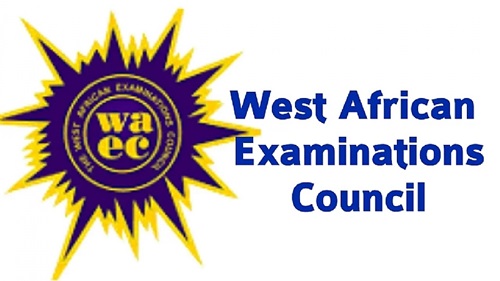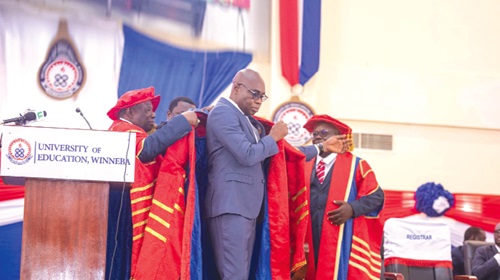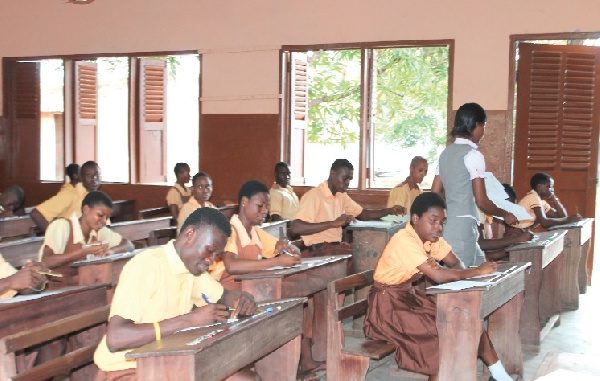Strategies to master and understand your best learning style

There are several students and each has his or her own best learning style. If you can tell the style that works best for you, you can use it to improve on your school work and scores.
To gain a better understanding of yourself as a learner, you need to evaluate the way you prefer to learn or process information.
By doing so, you will be able to develop strategies that will enhance your learning potential. The following evaluation is a short, quick way of assessing your learning style(s).
1 I can remember more about a subject through the lecture method with information, explanation, and discussion. [a] Often [b] Sometimes [c] Seldom
2 I prefer information to be written on the chalkboard, with the use of visual aids and assigned readings.
3 I like to write things down or to take notes for visual review. [a] Often [b] Sometimes [c] Seldom
4 I prefer to use posters, models, or actual practice and some activities in class. [a] Often [b] Sometimes [c] Seldom
5 I require explanations of diagrams, graphs, or visual directions. [a] Often [b] Sometimes [c] Seldom
6 I enjoy working with my hands or making things.[a] Often [b] Sometimes [c] Seldom
7 I am skillful with and enjoy developing and making graphs and charts. [a] Often [b] Sometimes [c] Seldom
8 I can tell if sounds match when presented with pairs of sounds. [a] Often [b] Sometimes [c] Seldom
9 I remember best by writing things down several times.[a] Often [b] Sometimes [c] Seldom
10 I can understand and follow directions on maps.[a] Often [b] Sometimes [c] Seldom
11 I do better at academic subjects by listening to lectures and tapes.[a] Often [b] Sometimes [c] Seldom
12 I play with coins or keys in pockets. [a] Often [b] Sometimes [c] Seldom
13 I learn to spell better by repeating the words out loud than by writing the words on paper. [a] Often [b] Sometimes [c] Seldom
14 I can better understand a news article by reading about it in the paper than by listening to the radio. 15 I chew gum or snack during studies.[a] Often [b] Sometimes [c] Seldom
16 I feel the best way to remember is to picture it in your head.[a] Often [b] Sometimes [c] Seldom
17 I learn spelling by “finger spelling,” (drawing the letters with a finger).[a] Often [b] Sometimes [c] Seldom
18 I would rather listen to a good lecture or speech than read about it.[a] Often [b] Sometimes [c] Seldom
19 I am good at working and solving jigsaw puzzles and mazes.[a] Often [b] Sometimes [c] Seldom
20 I grip objects in my hands during learning periods.[a] Often [b] Sometimes [c] Seldom
21 I prefer listening to the news on the radio rather than reading about it in the newspaper.[a] Often [b] Sometimes [c] Seldom
22 I obtain information on an interesting subject by reading relevant materials.[a] Often [b] Sometimes [c] Seldom
23 I feel very comfortable touching others, hugging, handshaking, etc.[a] Often [b] Sometimes [c] Seldom
24 I follow spoken directions better than written ones. [a] Often [b] Sometimes [c] Seldom
Understand your best learning style
Types of learning styles that may work for you. Read them carefully and compare your often answer to each of the learning styles. This will help you discover your best learning style. Note that you may have a primary and secondary style of learning.
VISUAL LEARNINGS: Visual learners relate most effectively to written information, notes, diagrams and pictures. Typically they will be unhappy with a presentation where they are unable to take detailed notes – to an extent, the information does not exist for a visual learner unless it has been seen written down. This is why some visual learners take notes even when they have printed course notes on the desk in front of them. Visual learners will tend to be most effective in written communication, symbol manipulation, etc. Visual learners should look at all study materials. They should use charts, maps, filmstrips, notes, and flashcards. Visual learners should practice visualizing or picturing words/concepts in their heads. Visual learners should write down everything for frequent and quick visual reference. Visual learners make up around 65% of the population.
AUDITORY LEARNERS: Auditory learners relate most effectively to the spoken word. They will tend to listen to a lecture, and then take notes afterward, or rely on printed notes. Often information written down will have little meaning until it has been heard – it may help auditory learners to read written information aloud. Auditory learners may be sophisticated speakers and may specialize effectively in subjects like law or politics. Auditory learners may want to use tapes. Taped lectures may help fill in the gaps in the student’s notes. Auditory learners should sit in front of the classroom where they can hear well. Auditory learners should do reading assignments out loud, or recite summaries of written materials. Auditory learners make up about 30% of the population.
TACTILE LEARNERS: Tactile learners learn effectively through touch, movement, and space. They learn skills by imitation and practice. Tactile learners often work slowly because the information is normally not presented in a style that suits their learning methods. Tactile learners may also benefit from typing notes, and/or acting out (role-playing) different situations. For example, tactile learners might pretend they are different parts of the cell and actually move about the classroom when studying cell structure. Tactile learners make up about 5% of the population.
Read: Is Ghana Education Service confused again?
Which of these methods is your best learning style which has worked for you in the past? Give it more attention and develop new ones.
 The New WhatsApp AI And Dangers Of Exam Malpractices During 2024 BECE and WASSCE
The New WhatsApp AI And Dangers Of Exam Malpractices During 2024 BECE and WASSCE  Prof. Mitchual inducted 5th VC of UEW
Prof. Mitchual inducted 5th VC of UEW  Don’t Politicise Education – NUGS President Urges Flag Bearers
Don’t Politicise Education – NUGS President Urges Flag Bearers  GES announces 2024 BECE supervisors, invigilators, and dispatchers vacancies
GES announces 2024 BECE supervisors, invigilators, and dispatchers vacancies  The MoE Releases the Enrollment Numbers for TVET Programs
The MoE Releases the Enrollment Numbers for TVET Programs  Renaming Ho Technical University after Ephraim Amu illegal – Minority
Renaming Ho Technical University after Ephraim Amu illegal – Minority  Father’s Foundation provides generous support to Reggie’s Daycare Centre
Father’s Foundation provides generous support to Reggie’s Daycare Centre  Successes in combating forced and child labour at Atiwa East District spotlighted at community engagement event
Successes in combating forced and child labour at Atiwa East District spotlighted at community engagement event  [VIDEO] Soldier shot dead at Kasoa over alleged land dispute
[VIDEO] Soldier shot dead at Kasoa over alleged land dispute  2024 Ejisu By-Election Results Trickling In
2024 Ejisu By-Election Results Trickling In